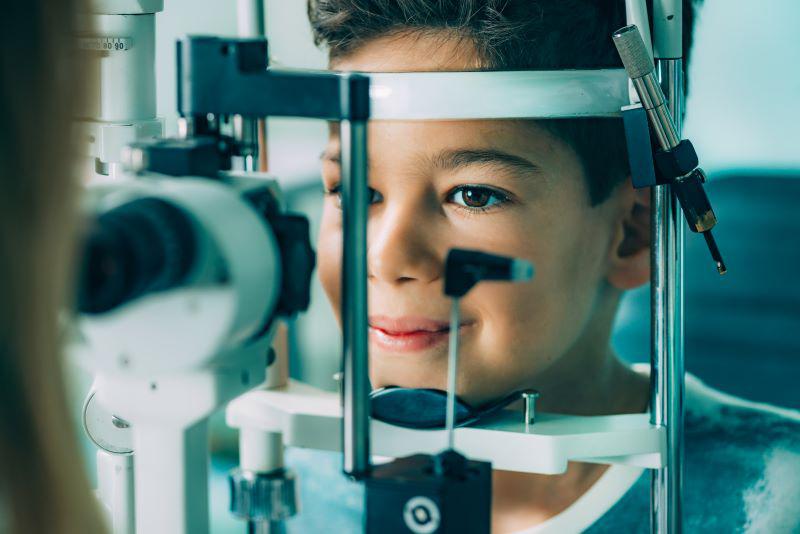Get Healthy!

- Posted August 23, 2023
Too Few Kids Are Getting Regular Eye Tests, and Insurance Is Key
Eye tests are an important way to catch potential eye-related issues in children, but more than two-thirds of kids in the United States are not receiving them at their checkups.
Those with Medicaid and other public health insurance were far less likely to receive these vision checks in the past year at their primary care doctor's office, according to researchers at University of Michigan and Duke University.
Children with private insurance had only slightly higher rates of screening, at 34%, the study found.
The lowest rates of eye screening were among uninsured children, at 18%, and those with safety net insurance provided for those with low incomes, were at a 28% screening rate.
"Well-child visits, and other annual checkups such as school or camp physicals, are critical opportunities for catching eye-related issues in children that can have lasting consequences for their education and lives, and these data clearly show room for improvement,"said Dr. Olivia Killeen. She is a clinical fellow in pediatric ophthalmology at Duke Health in Durham, N.C.
Killeen and colleagues conducted the study while she was a National Clinician Scholar at the University of Michigan Institute for Healthcare Policy and Innovation and Kellogg Eye Center, both in Ann Arbor.
Children aged 3 to 5 had the highest screening rates, but these were still low, the study authors said in a Michigan Medicine news release. That age group is covered by a national universal vision screening guideline because of the importance of early diagnosis and treatment of amblyopia, sometimes called "lazy eye."
Still, among 3- to 5-year-olds with private insurance, only a little over 41% had their vision screened at their regular primary care clinic or pediatrician's office in the last year. The same was true for about 35% of those with public insurance and 30% of those with no insurance.
The study found that screening rates in elementary school-aged children were 5 percentage points below the rates for preschoolers. Only 25% of privately insured middle-school and high-school-aged children, 20% of publicly insured in that age group and 17% of their uninsured peers, had their vision checked recently by their regular health visit.
Data for the study came from parent surveys from the federally funded National Survey of Children's Health from 2018 to 2020.
Parents were asked if their children had received a check of their ability to see letters, pictures or shapes on a standard eye chart during the past year at either their pediatrician's office or regular doctor's office.
This study also revealed the disparity in prevention and early detection at primary care visits by insurance status.
Only 46% of uninsured children had had a preventive health care visit with their regular provider in the last year. For privately insured children, that was 81%. For publicly insured children it was 73%.
The study noted disparity in another group as well.
Children with special health care needs, who may be eligible for full or partial health insurance coverage under the Children's Health Insurance Program (CHIP) even if family incomes were too high for Medicaid qualification, had very low rates of vision screening.
That meant only 28% of those with public insurance, 19% of those with private insurance and 12% of those who were uninsured had their vision checked in the past year.
The study findings were published online Aug. 17 in JAMA Ophthalmology.
More information
The American Academy of Ophthalmology has more on vision screening for children.
SOURCE: Michigan Medicine - University of Michigan, news release, Aug. 21, 2023





